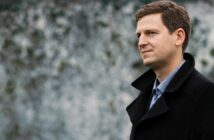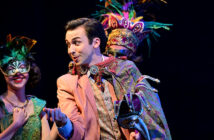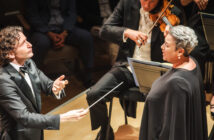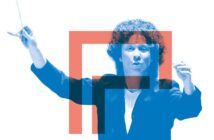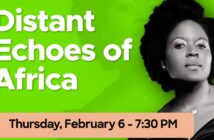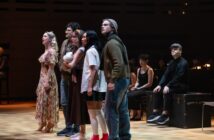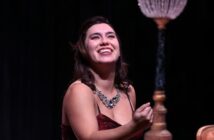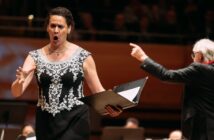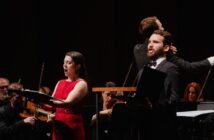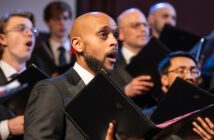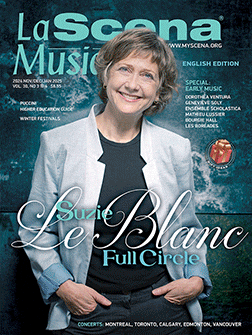
I try to get to Dallas as often as I can to bask in the glory of the Morton H. Meyerson Symphony Center, one of the world’s great concert halls. After listening to concerts in other venues, it is always a shock to experience the Meyerson. To hear every instrument in the orchestra as it was meant to be heard, and to hear the perfectly blended sound of a fine orchestra, with a presence that is palpable, is satisfaction beyond words. Simply put, as the saying goes: “You had to be there!”
Of course, the Meyerson is simply a space, albeit a very carefully designed space, and like a Strad or any other fine instrument, makes no sound by itself. One needs musicians, and a gifted leader who can make things happen.
By now we know that Jaap van Zweden is an exceptional leader able to take full advantage of a stage peopled by excellent instrumentalists and singers, and of the hall itself. From the opening bars, one knew that this was going to be a typical van Zweden performance – intense and exciting, but absolutely rooted in the composer’s instructions.
Gustav Mahler’s Symphony No. 2 (Resurrection) has been important in the life of the Dallas Symphony Orchestra (DSO) for a long time; for example, when the Eugene McDermott Concert Hall in the Meyerson Symphony Center opened in 1989, music director Eduardo Mata began his tenure with this inspiring piece; in 2006, music director Andrew Litton ended his tenure with it; four years later, in May, 2010, Jaap van Zweden celebrated both the end of his second season as music director of the DSO and the end of the orchestra’s 20th season in the Meyerson with the Mahler Second.
This Mahler Shook the Rafters and Touched the Soul!
All the previous performances were apparently memorable; the latest, under van Zweden, was arguably as good as it gets. To cite just one moment in the Mahler Second performance, when the organ joins the orchestra and chorus towards the end of the last movement: you don’t just hear it – you feel it through your whole body.
The piece opens with the violins and violas playing a tremolo with the dynamic marking fortissimo. Then, in the second bar, cellos and basses play a sixteenth-note figure marked triple forte, and – perhaps for the first time in symphonic music – the German marking “wild”, meaning in English “wild” or “violent”.
In this first movement, Mahler is depicting the dark side of life, the struggle of man against natural and human forces, and against oneself. It is the struggle to achieve something worthwhile and to make something of oneself. More specifically it is a struggle for faith in God. For Mahler, this was a very real struggle in his own life and his faith was utterly destroyed many times.
The Mahler Second begins in turmoil and angst, but ends in joy and affirmation of belief in life everlasting. Or was this affirmation simply wishful thinking for Mahler? His personal struggle with faith went on for years and found expression in every piece of music that he wrote. Sadly perhaps, there is neither joy nor affirmation in the final bars of Symphony No. 9 – his last completed symphony.
The conductor’s challenge in the opening bars of the Mahler Second is to not only to play what the composer has written, but also to give it the life and death intensity that defines the essence of Mahler. This is not accomplished by getting the strings to play “loud.” Mahler very carefully calibrated all the dynamic markings and a conductor who ignores the nuances will not come close to realizing the meaning of entire phrases, passages and movements. Van Zweden and the members of the enlarged (for this performance) DSO had clearly rehearsed painstakingly, to accomplish a performance so detailed, accurate and engrossing.
Chorus, Soloists, Orchestra Magnificent Match!
Soloists for the Resurrection were soprano Heidi Grant Murphy and mezzo-soprano Sasha Cooke, who recently triumphed in the Met production of John Adams’ opera Dr. Atomic, and was seen by millions in the Met HD Live broadcast.
In the Urlicht movement, van Zweden achieved a remarkable blend of vocal and instrumental sound. The brass players breathed as one in their quiet, slow-moving passages, and perfectly matched Ms. Cooke’s phrasing. Even though the soloists were positioned toward the back of the orchestra, Ms. Cooke’s voice came through with both intensity and clarity. The soprano part is much less prominent in this work, and Heidi Grant Murphy did not seem to be at her best.
The Dallas Symphony Chorus (DSC) is one of the finest ensembles of its kind anywhere and it certainly distinguished itself in this performance of Mahler’s Resurrection Symphony. Longtime DSC director, David R. Davidson, passed away last year, and he deserves great credit for bringing the choir to its present level. Indicative of the seriousness with which these choir members take their responsibilities, is the fact that they sang this performance without scores.
Hellos, Goodbyes, and Forever Malher
With this concert, the DSO introduced Edward Stephan, its new timpanist. It was an auspicious debut, to say the least. His very first timpani roll, four bars before letter 2 in the score, was absolutely thrilling and his strong and multi-faceted playing will be a great asset. Incidentally, Mr. Stephan is no stranger to the Dallas area; he has been playing for some years just down the road, so to speak, with the Fort Worth Symphony. Nonetheless, he had no inside track to get the job. He auditioned and prevailed over dozens of other candidates.
On a somewhat sad note, concertmaster Emanuel Borok recently announced his retirement effective in August, making this Mahler Second his last subscription concert. As usual, he was superb in his solos and his leadership will be greatly missed.
More Mahler to come from van Zweden in Dallas. One of the highlights of the DSO’s 2010-2011 season will be Mahler’s Symphony No. 6. Also programmed: Shostakovich’s Symphony No. 8 and Tchaikovsky’s Manfred Symphony, both conducted by van Zweden.
Paul E. Robinson is the author of Herbert von Karajan: the Maestro as Superstar, and Sir Georg Solti: His Life and Music, both available at Amazon.com.
Photo by Marita

